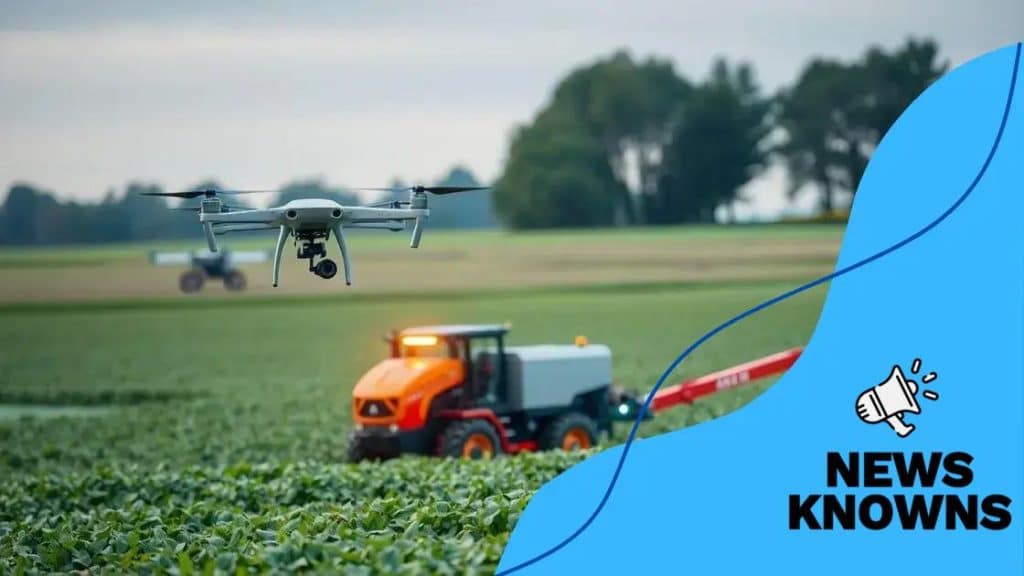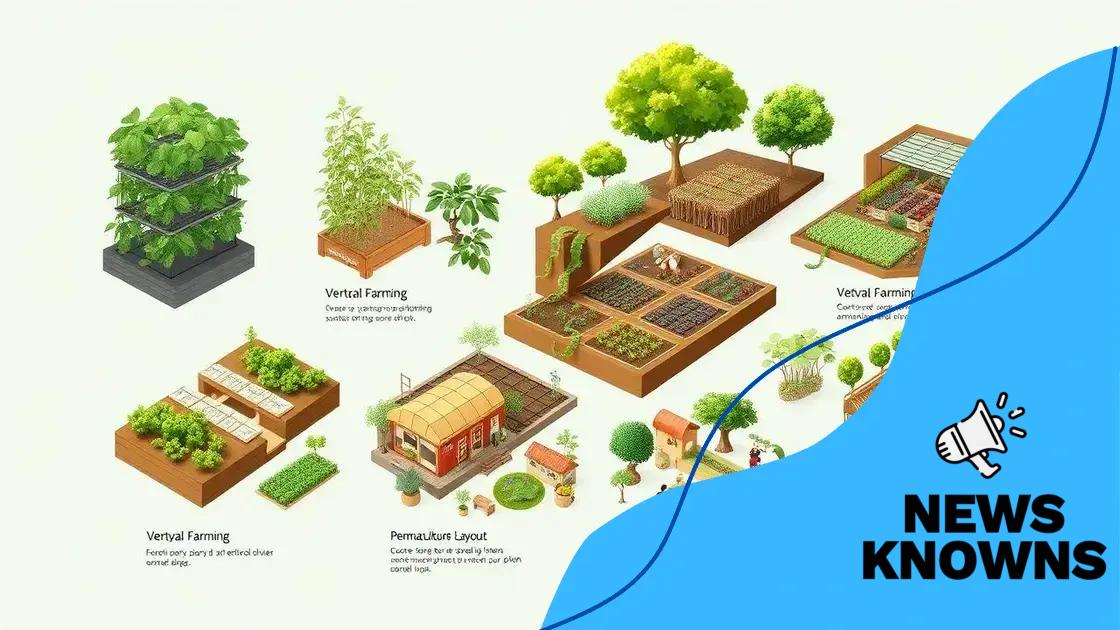How the global food crisis is influencing agriculture technology

Anúncios
Technology significantly influences agriculture by enhancing efficiency, sustainability, and productivity, while innovative practices like precision farming and community engagement are essential for addressing the global food crisis.
How the global food crisis is influencing agriculture technology is a pressing question for many around the world. As food shortages become more evident, agricultural technology is stepping in to help. But how exactly is it changing the way we grow food?
Anúncios
Understanding the global food crisis
Understanding the global food crisis is essential for grasping its effects on agriculture and society. This crisis stems from various factors, including climate change, rising population, and inefficient food distribution systems. These issues lead to food shortages and increased prices, affecting millions globally.
Key contributors to the food crisis
Several factors contribute to the ongoing food crisis. Each one plays a significant role in the availability of food and how it impacts communities.
- Climate change: Adverse weather conditions can destroy crops and reduce yields.
- Population growth: As the world population increases, so does the demand for food.
- Poverty: Many people lack the resources to access sufficient nutritional food.
- Inflation: Rising costs of production lead to higher food prices.
Each of these elements exacerbates the food crisis, creating a ripple effect throughout the global economy. For instance, when crop yields fail due to unexpected weather, food becomes scarcer. This scarcity leads to higher prices, forcing families to choose between nutritious food and other basic needs.
Anúncios
The impact of food insecurity
The consequences of the food crisis are severe and far-reaching. Food insecurity affects health, education, and economic stability. Children who do not receive adequate nutrition face difficulties in learning and development.
Additionally, communities grappling with food insecurity often experience economic decline as local businesses suffer. This decline creates a vicious cycle that makes addressing the crisis even more challenging.
In summary, understanding the global food crisis is critical for informing agricultural practices and policy changes aimed at enhancing food security. Recognizing these elements allows us to work together toward solutions that benefit everyone.
The role of technology in agriculture
The role of technology in agriculture is transforming the way food is produced globally. Farmers are leveraging advanced tools and techniques to increase efficiency and yields while minimizing environmental impact. Various technologies are making a significant difference in farming practices.
Innovative tools and techniques
Several technologies are at the forefront of modern agriculture. These innovations not only boost productivity but also contribute to sustainable farming.
- Precision farming: This approach utilizes data and analytics to enhance crop yields. Farmers use sensors and GPS to monitor fields closely.
- Drones: Unmanned aerial vehicles help in crop monitoring and health assessment from above. They provide real-time data for quick decision-making.
- Automation: Machinery such as robotic harvesters reduces labor costs and increases efficiency in planting and gathering crops.
- Genetic engineering: Developing drought-resistant and pest-resistant crops leads to better yields even in challenging conditions.
These technologies enable farmers to respond swiftly to challenges like pests and climate changes. With the increasing demand for food, the adoption of such innovations is crucial for meeting these needs sustainably.
Benefits of technological advancements
Implementing technology in agriculture brings several benefits. It not only increases productivity but also helps in resource conservation.
For instance, precision agriculture reduces water waste by applying irrigation only when necessary. This targeted approach conserves water and lowers costs. Similarly, drones can survey large areas more efficiently than traditional methods, allowing farmers to focus on problem areas.
The integration of technology in agriculture is vital for facing the challenges posed by a growing population and changing climate. As these technologies continue to evolve, they promise to provide even more effective solutions for sustainable farming.
Innovative practices emerging in response

Innovative practices are emerging in response to the global food crisis, as farmers and researchers alike seek sustainable solutions. Understanding these practices is crucial for navigating the challenges of modern agriculture. Many farmers are adopting new methods that not only address immediate food shortages but also ensure long-term sustainability.
Examples of innovative approaches
Several key practices have gained traction in recent years. These innovations aim to increase efficiency and resilience in agricultural systems.
- Vertical farming: This method involves growing crops in stacked layers, often indoors. It maximizes space and reduces the need for pesticides.
- Permaculture: A design philosophy that mimics natural ecosystems. It focuses on biodiversity, improving soil health, and creating self-sustaining environments.
- Agroforestry: This practice combines trees and shrubs with crops and livestock. It helps improve soil quality and provides shade for crops.
- Biotechnology: Genetic modifications can create crops that withstand harsh conditions, ensuring farmers can produce food even in challenging climates.
These practices not only boost food production but also have positive environmental impacts. For instance, vertical farming uses significantly less water than traditional farming, making it an appealing option in water-scarce regions. By adopting such innovative strategies, farmers contribute to a more resilient food system.
Community involvement and education
Innovative practices also emphasize the importance of community involvement. Educating farmers about modern techniques is vital for successful implementation. Many organizations are stepping in to provide training and resources to local farmers.
Workshops and cooperative programs encourage knowledge sharing and collaboration. This community-based approach helps farmers adapt to new methods while tailoring them to local conditions. As a result, these innovative practices can thrive and create a sustainable future for agriculture in the face of the ongoing food crisis.
Sustainable farming solutions
Sustainable farming solutions are becoming increasingly vital in the effort to address the global food crisis. Farmers are adopting practices that not only increase productivity but also protect the environment for future generations. These solutions focus on balancing economic viability with ecological health.
Key sustainable practices
Several key practices are leading the way in sustainable agriculture. These methods support both food production and environmental conservation.
- Crop rotation: This practice involves alternating different crops in the same field. It helps prevent soil depletion and control pests naturally.
- Cover cropping: Growing cover crops during off-seasons enriches the soil with nutrients and reduces erosion, enhancing overall soil health.
- Integrated pest management: This approach focuses on using natural predators and biopesticides to manage pests while minimizing chemical inputs.
- Organic farming: By avoiding synthetic fertilizers and pesticides, organic farming enhances biodiversity and promotes healthier ecosystems.
These sustainable practices not only improve crop yields but also protect resources. By enriching the soil and reducing harmful chemicals, farmers contribute to healthier ecosystems. The benefits of sustainable farming extend beyond immediate yields and help ensure a stable food supply for future generations.
Community engagement in sustainability
Community involvement is essential in implementing sustainable farming solutions. Farmers often collaborate with local organizations to share resources and knowledge. Workshops and training sessions equip farmers with the tools needed to adopt these practices.
Additionally, community-supported agriculture (CSA) programs help connect local farms with consumers. This model supports local economies and encourages awareness about sustainable food choices. By fostering a strong community network, sustainable practices can be effectively integrated into everyday farming.
As more farmers recognize the importance of sustainable farming solutions, the agricultural landscape is evolving. Embracing these practices is not only beneficial for farmers but is essential for ensuring food security and environmental health.
Future trends in agriculture technology
Future trends in agriculture technology are shaping the landscape of farming as we know it. As the global food crisis pushes for innovative solutions, new technologies are emerging to meet these demands. This evolution aims to increase efficiency, sustainability, and productivity in agriculture.
Emerging technologies
Several technologies are beginning to have a profound impact on the way farming is conducted. These innovations promise to change traditional practices and improve crop management.
- Artificial intelligence (AI): AI is increasingly used for data analysis in farming. It helps predict weather patterns, monitor crop health, and optimize resources.
- Internet of Things (IoT): IoT devices enable farmers to gather real-time data from their fields. Sensors track soil moisture, temperature, and other critical factors to help with decision-making.
- Blockchain: This technology is being used to enhance transparency and traceability in food supply chains, ensuring food safety and quality.
- Robotics and automation: Automated machinery is making its way into fields, improving efficiency during planting and harvesting. Robotics can reduce labor costs and increase precision.
These advancements not only increase productivity but also reduce waste and environmental impact. The integration of smart technologies is key to addressing food security challenges.
Sustainability and resource management
Future trends also emphasize sustainable practices through technology. Smart farming aims to use resources more efficiently by minimizing water use and reducing chemical inputs. Technologies such as precision irrigation enable farmers to water crops only when needed. This targeted approach conserves water and promotes better plant health.
In addition, conservation tillage and cover cropping are supported by emerging technologies. These practices enhance soil health and reduce erosion, contributing to long-term sustainability in agriculture.
As these technologies continue to develop, they will play a crucial role in the future of agriculture. By embracing innovation, farmers can tackle the challenges posed by a growing population and limited resources. The shift towards more technologically advanced and sustainable farming methods will significantly shape the industry going forward.
FAQ – Frequently Asked Questions about Agriculture Technology and Sustainability
What are the main benefits of using technology in agriculture?
Technology in agriculture improves efficiency, increases crop yields, and helps manage resources better, making farming more sustainable.
How does sustainable farming contribute to food security?
Sustainable farming practices, like crop rotation and organic farming, protect the environment and ensure a reliable supply of food for the future.
What role does community involvement play in modern agriculture?
Community involvement helps farmers share knowledge and resources, making it easier to implement new practices and technologies effectively.
What future trends are emerging in agriculture technology?
Future trends include the use of AI, IoT devices, and robotics to enhance productivity and sustainability in farming.





